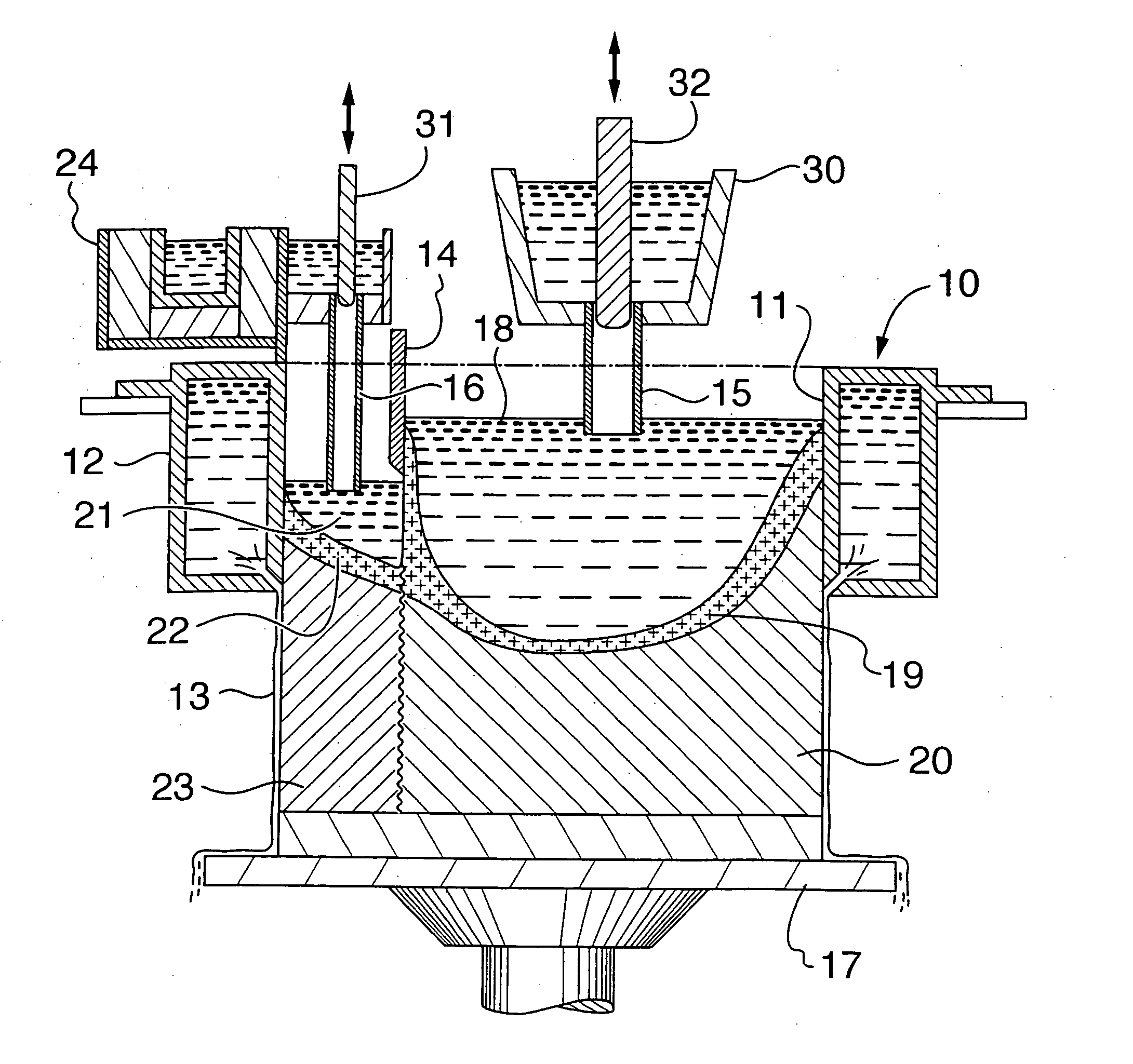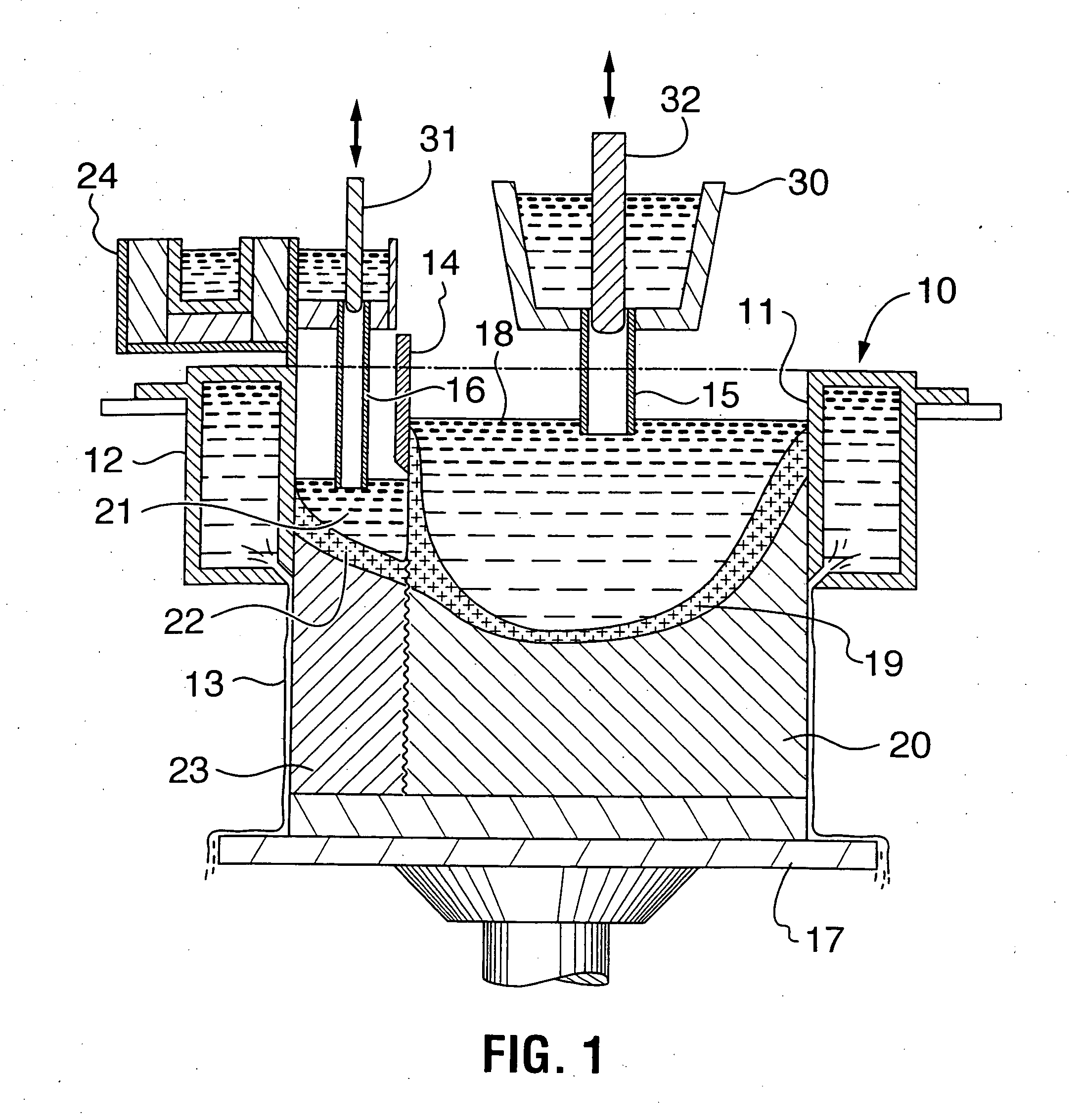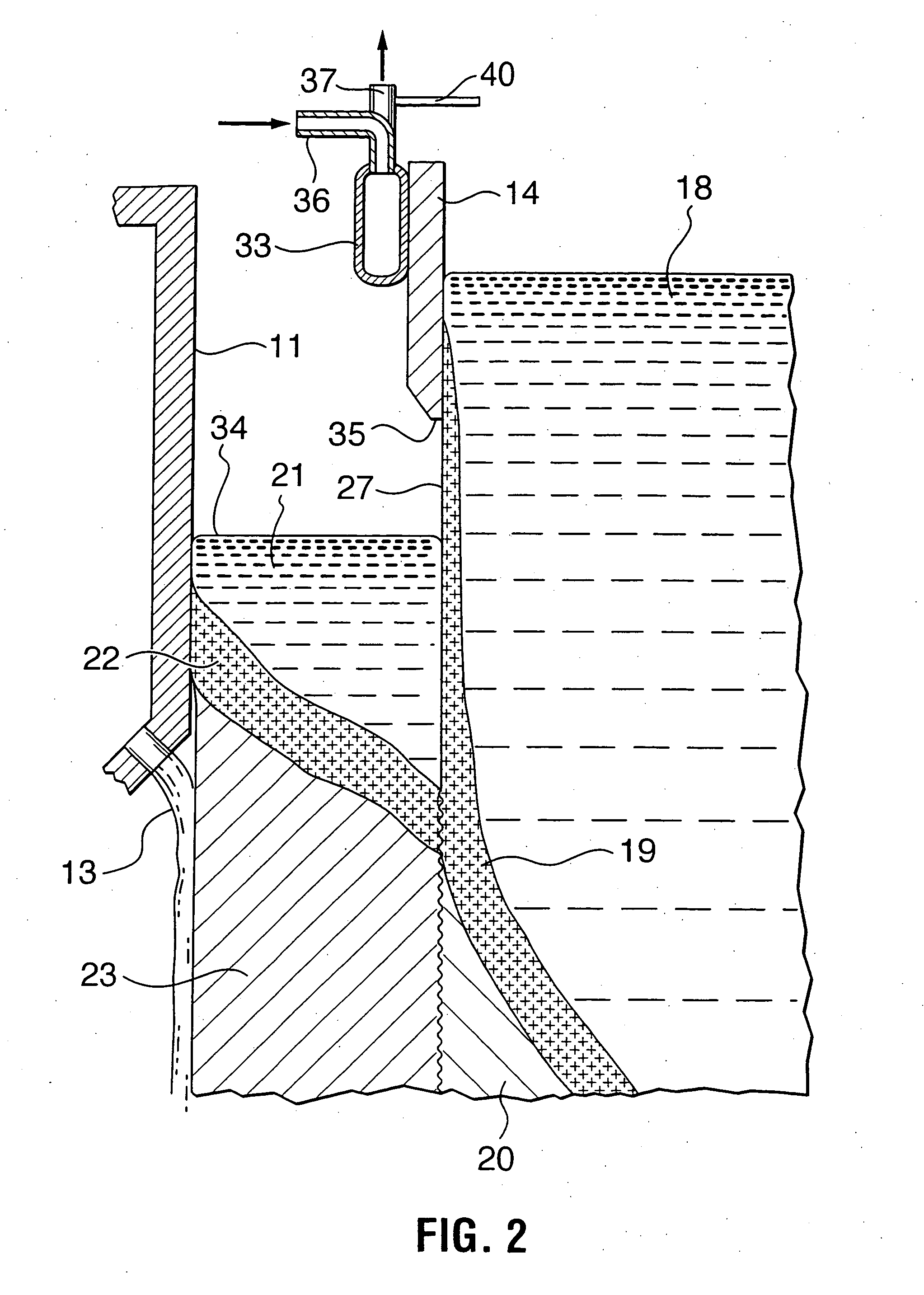Method for casting composite ingot
a metal ingot and composite technology, applied in the direction of thin material handling, transportation and packaging, etc., can solve the problems of inconvenient control of methods and problems such as the bonding of layers, and achieve the effect of facilitating metallurgical bonding and better control
- Summary
- Abstract
- Description
- Claims
- Application Information
AI Technical Summary
Benefits of technology
Problems solved by technology
Method used
Image
Examples
Embodiment Construction
[0094] With reference to FIG. 1, rectangular casting mould assembly 10 has mould walls 11 forming part of a water jacket 12 from which a stream of cooling water 13 is dispensed.
[0095] The feed portion of the mould is divided by a divider wall 14 into two feed chambers. A molten metal delivery trough 30 and delivery nozzle 15 equipped with an adjustable throttle 32 feeds a first alloy into one feed chamber and a second metal delivery trough 24 equipped with a side channel, delivery nozzle 16 and adjustable throttle 31 feeds a second alloy into a second feed chamber. The adjustable throttles 31, 32 are adjusted either manually or responsive to some control signal to adjust the flow of metal into the respective feed chambers. A vertically movable bottom block unit 17 supports the embryonic composite ingot being formed and fits into the outlet end of the mould prior to starting a cast and thereafter is lowered to allow the ingot to form.
[0096] As more clearly shown with reference to F...
PUM
| Property | Measurement | Unit |
|---|---|---|
| thermal conductivity | aaaaa | aaaaa |
| thickness | aaaaa | aaaaa |
| thickness | aaaaa | aaaaa |
Abstract
Description
Claims
Application Information
 Login to View More
Login to View More - R&D
- Intellectual Property
- Life Sciences
- Materials
- Tech Scout
- Unparalleled Data Quality
- Higher Quality Content
- 60% Fewer Hallucinations
Browse by: Latest US Patents, China's latest patents, Technical Efficacy Thesaurus, Application Domain, Technology Topic, Popular Technical Reports.
© 2025 PatSnap. All rights reserved.Legal|Privacy policy|Modern Slavery Act Transparency Statement|Sitemap|About US| Contact US: help@patsnap.com



